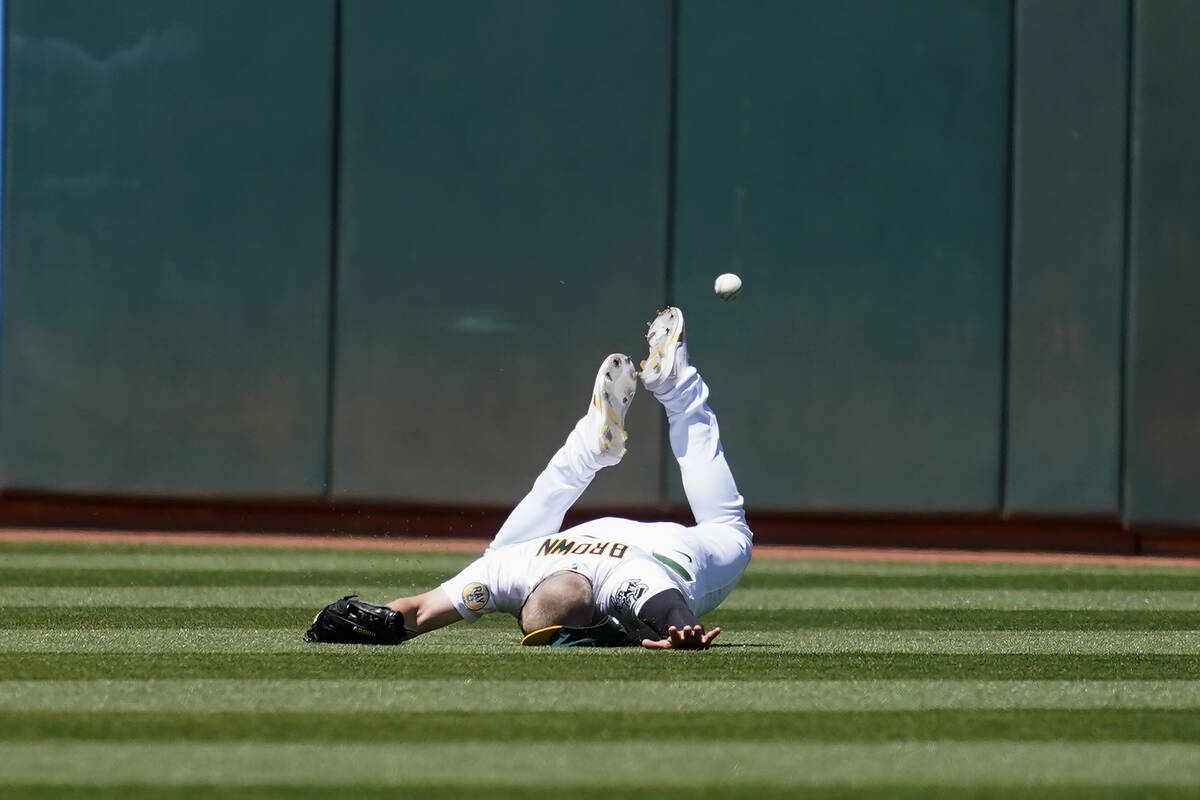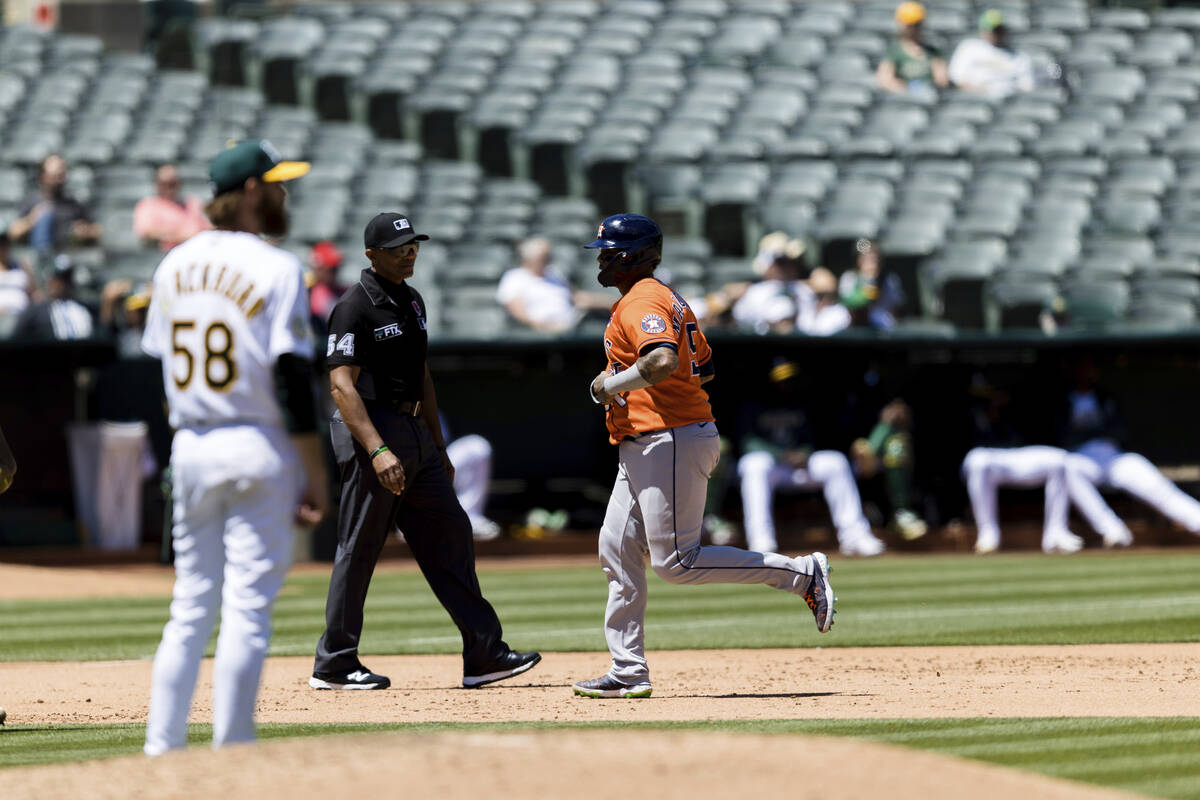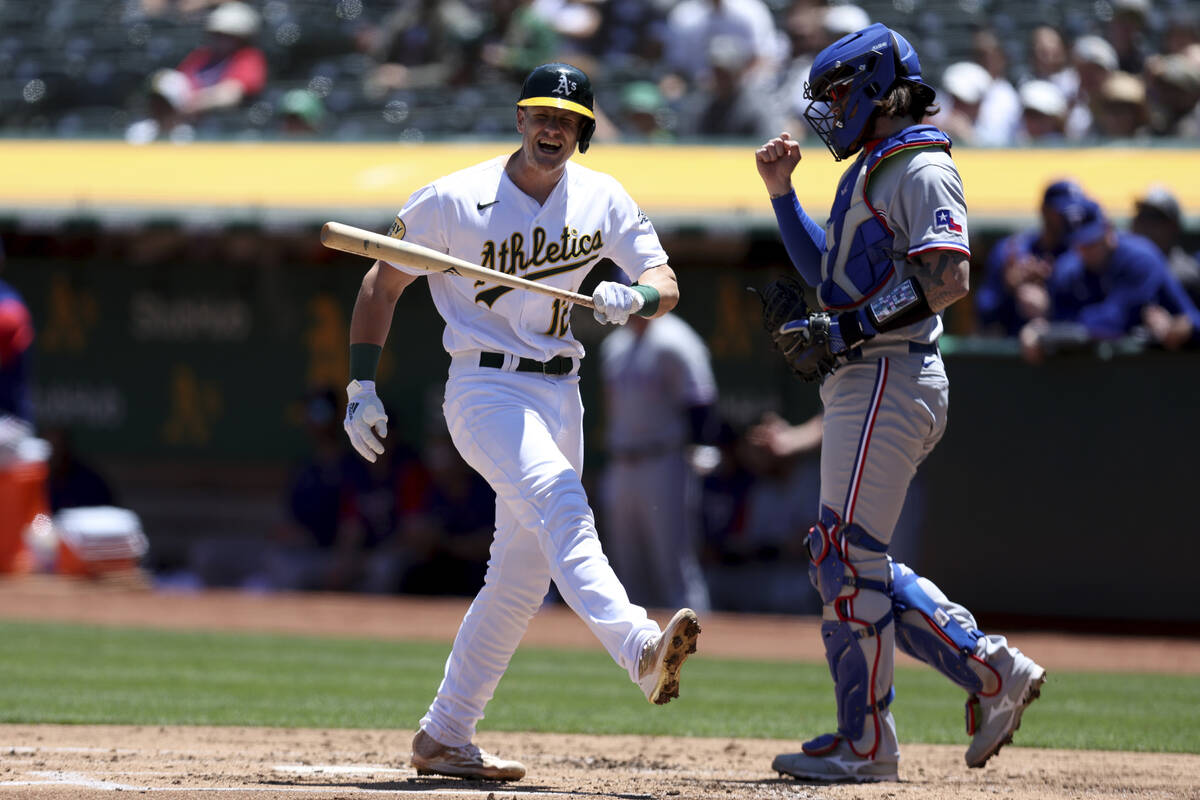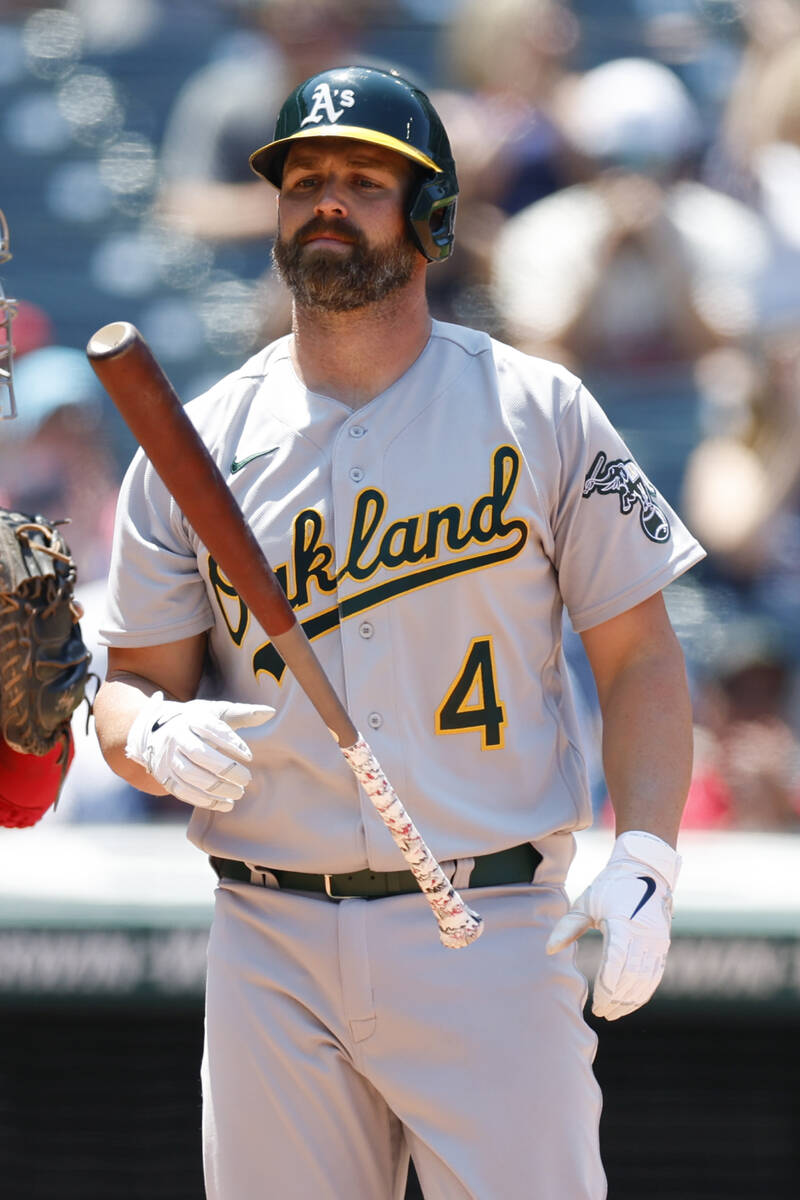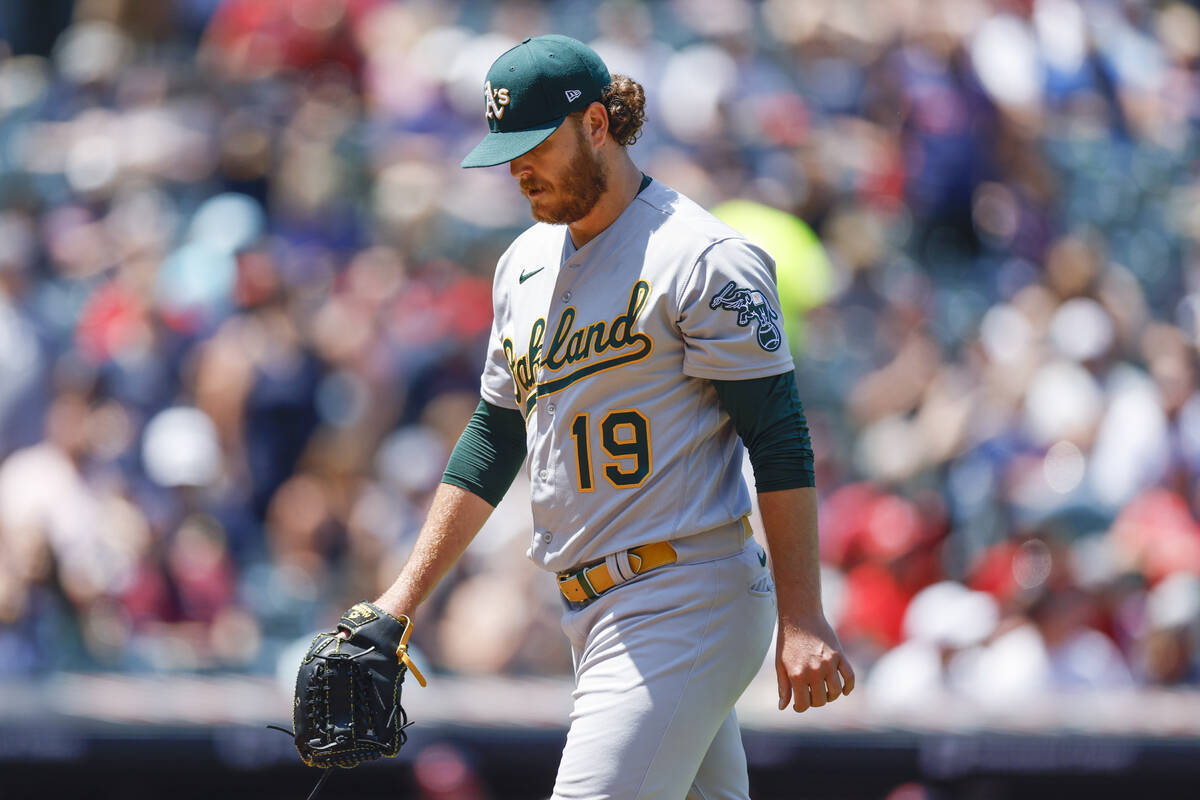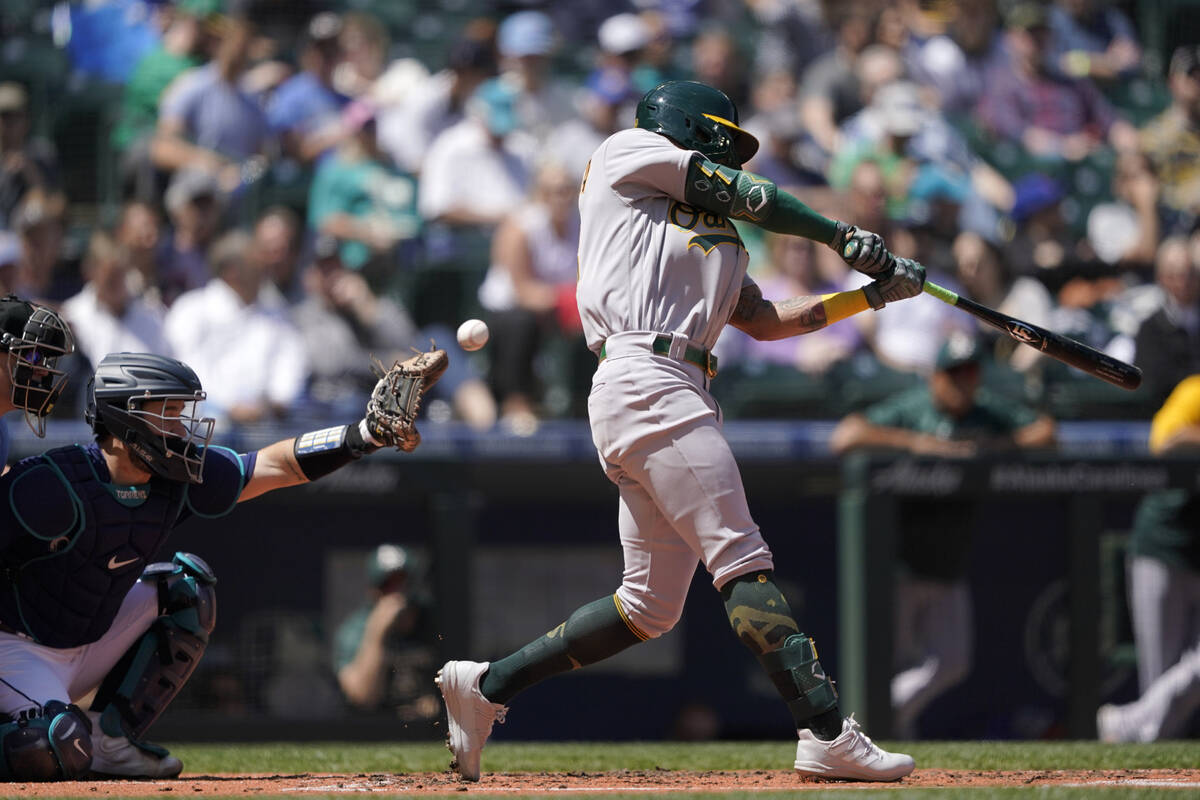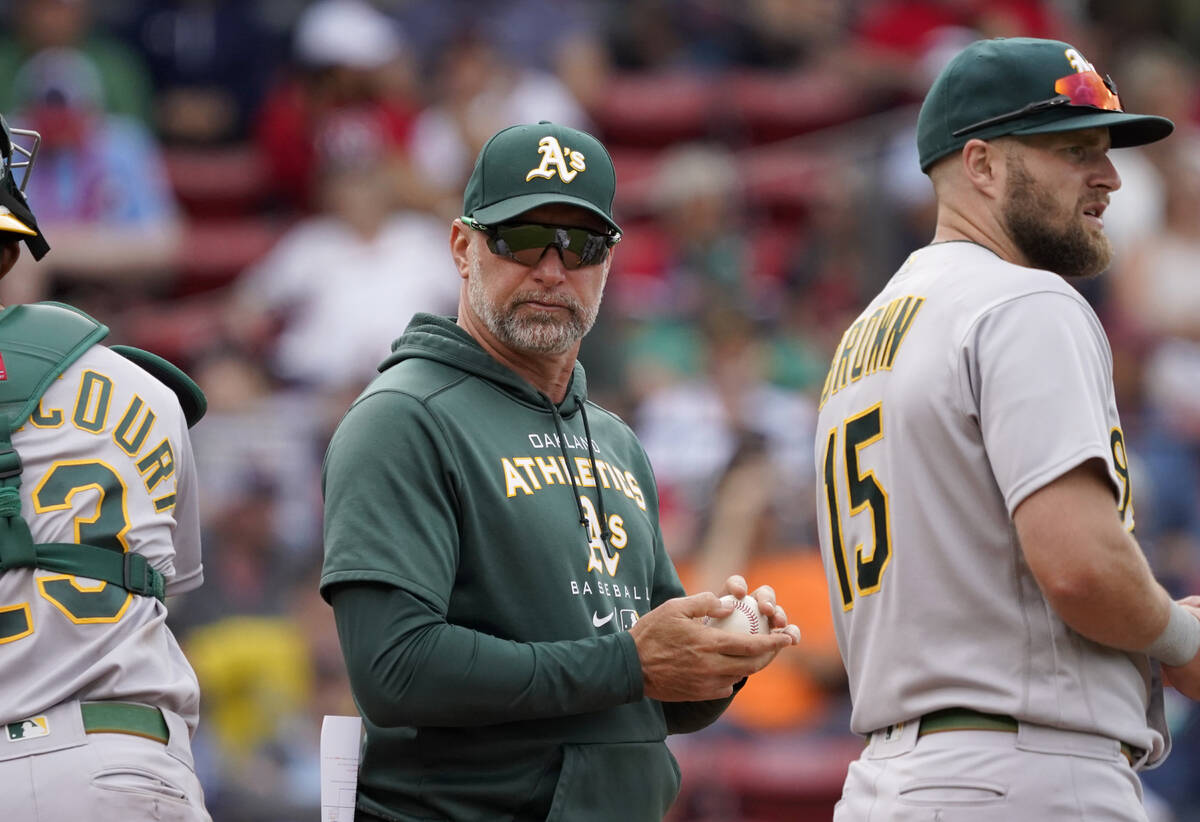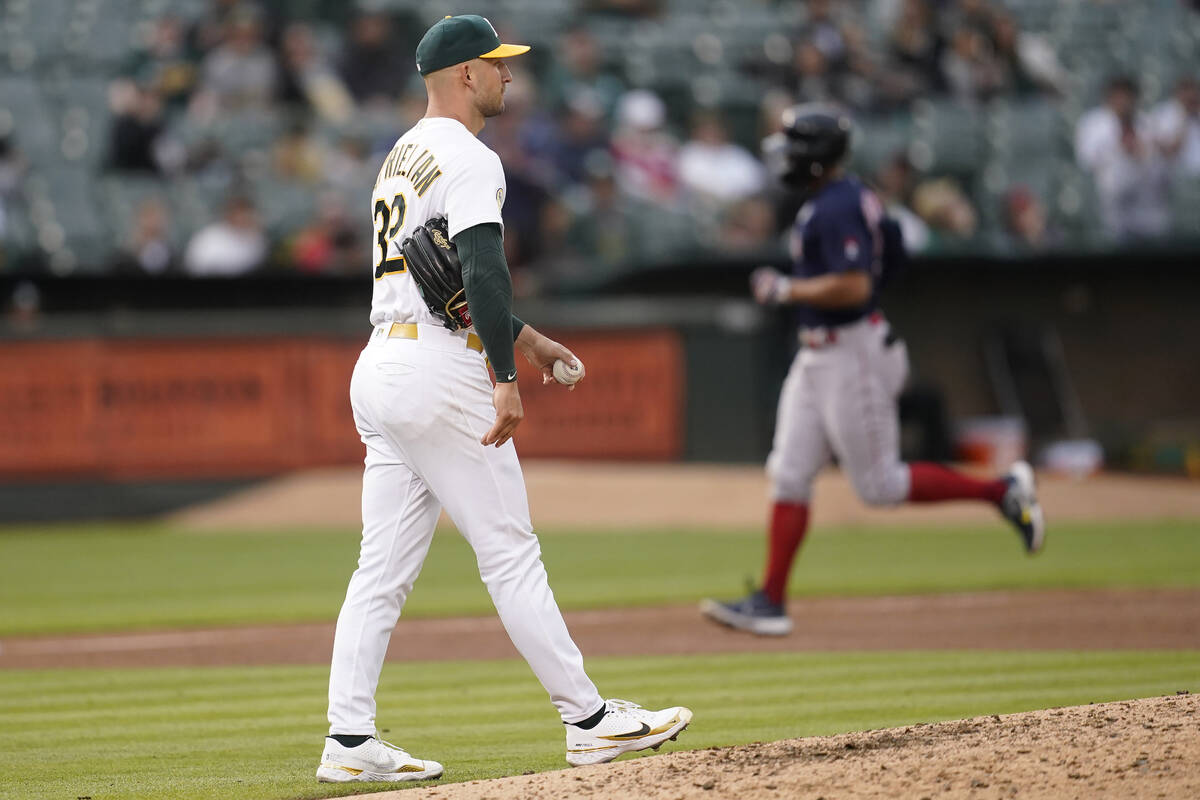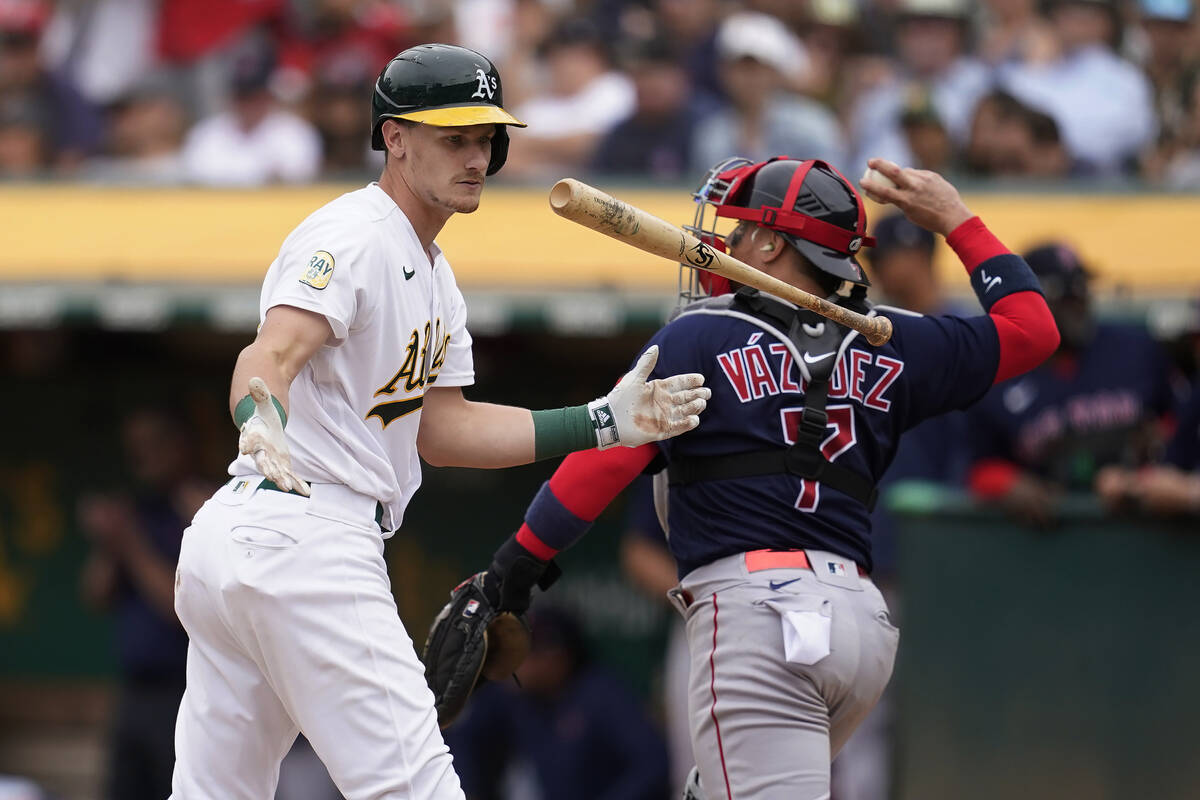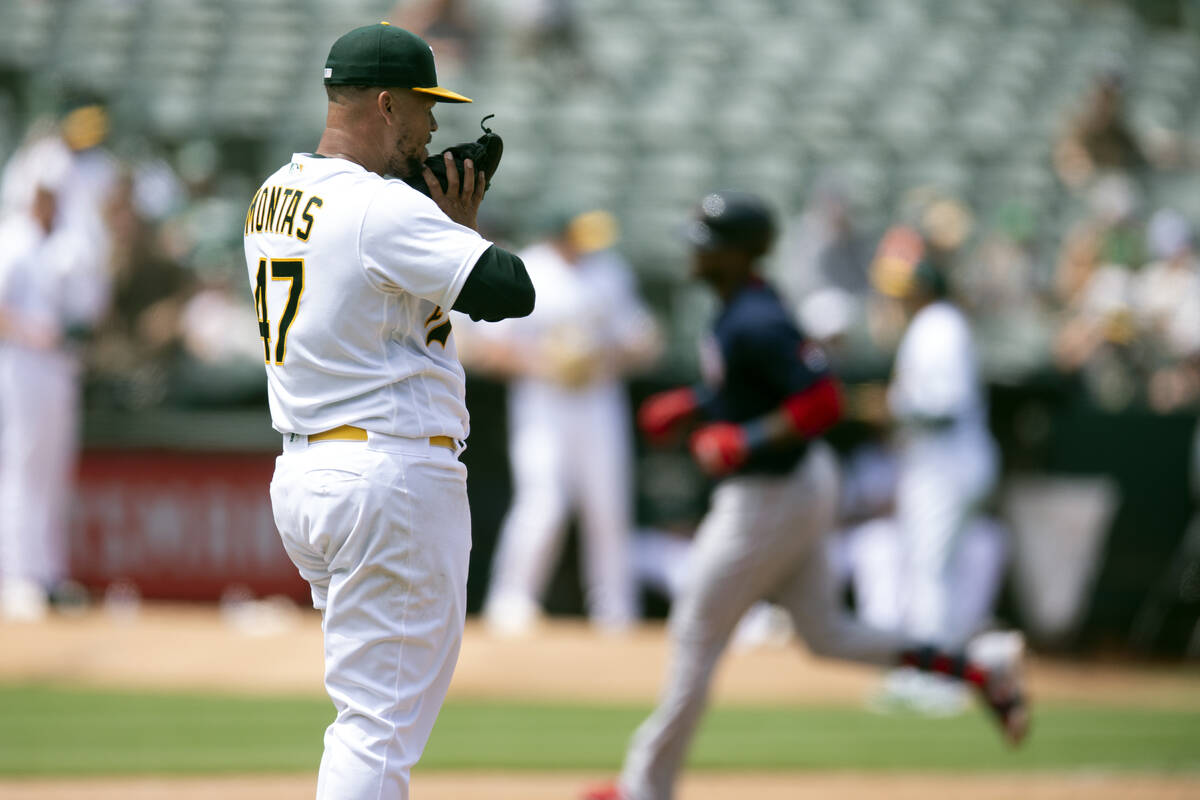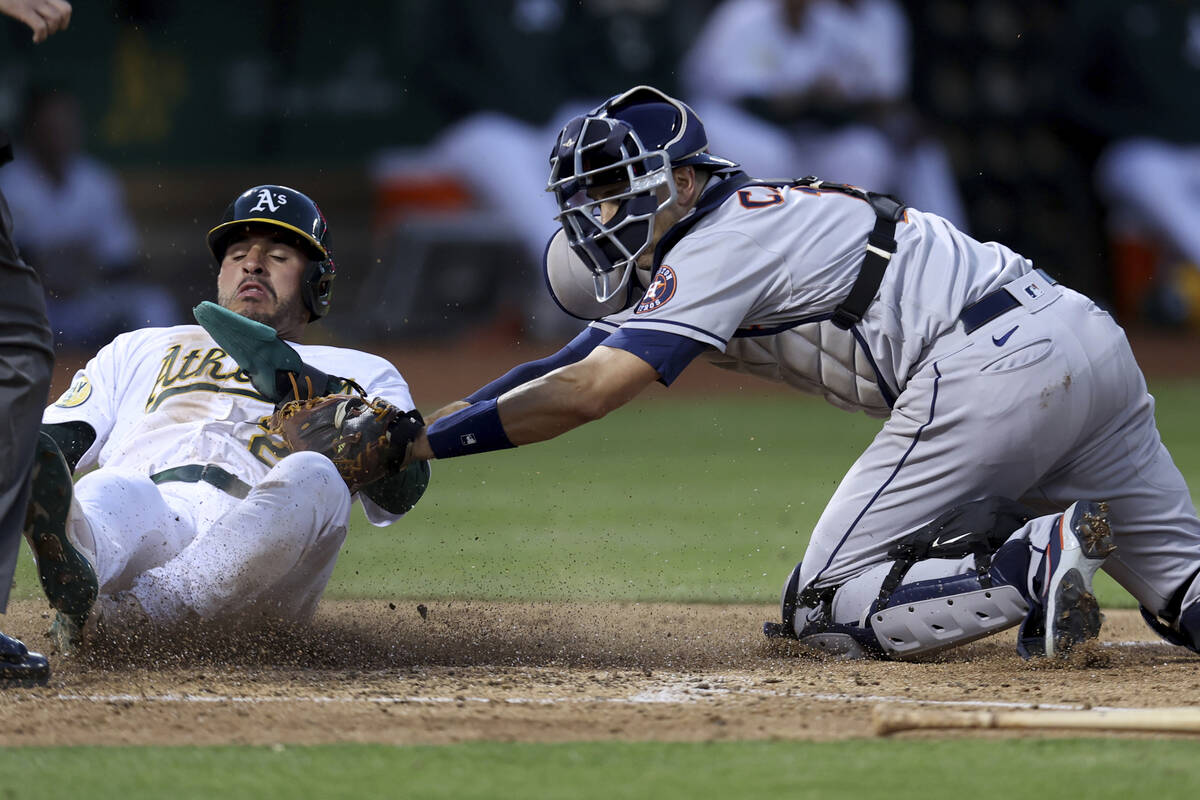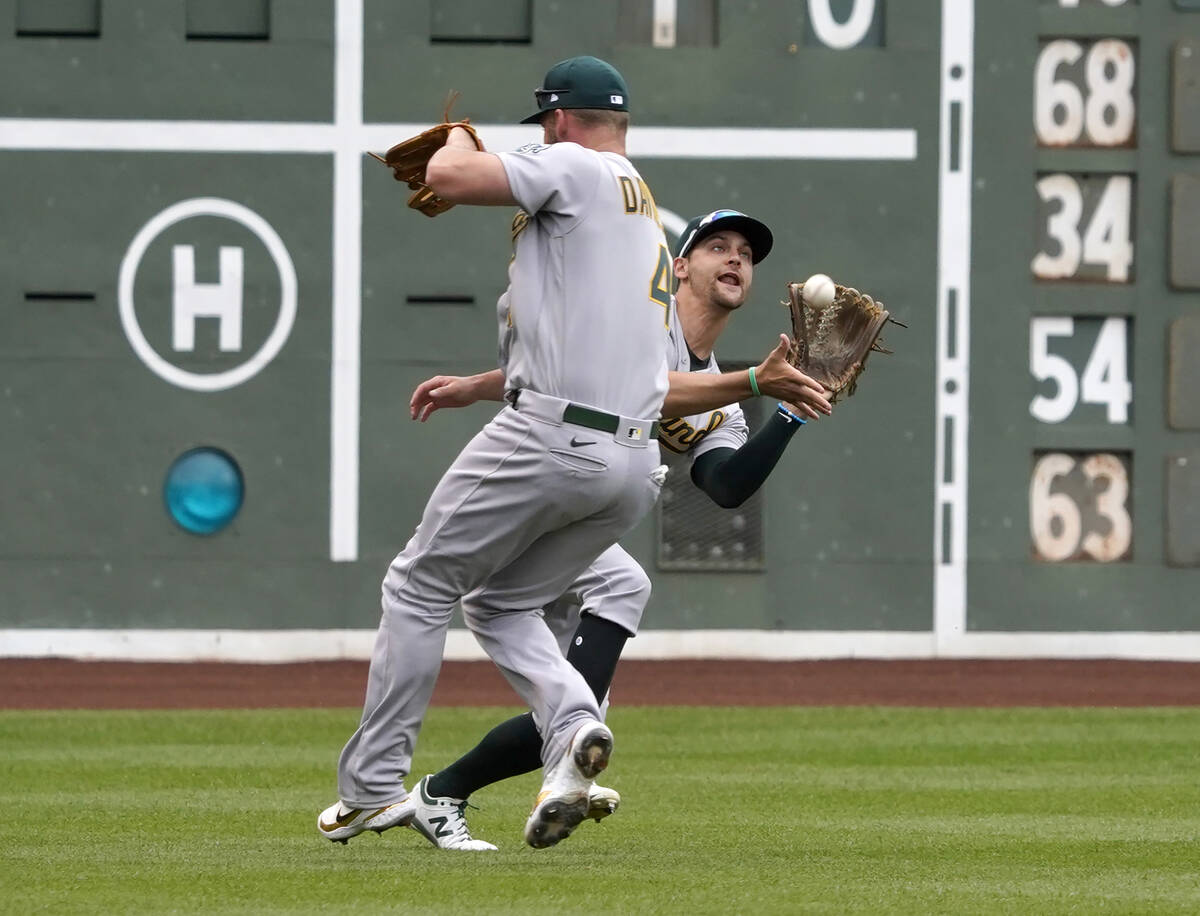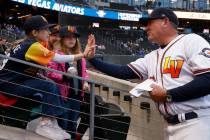The A’s are bad. Would a move to Vegas help?
With so much baseball yet to be played and so much political wrangling still to be done, any discourse on what kind of team Las Vegas might be inheriting should the Oakland Athletics move to the valley might seem like putting a green and gold cart ahead of the horse.
But if there’s one thing baseball fans enjoy more than a cold beer in the bleachers and a free bobblehead doll, it’s speculating about the future. A quick glance at the standings suggests that regardless of where the A’s wind up, they won’t be very good.
After Saturday’s game against the similarly downtrodden Kansas City Royals at decrepit RingCentral Coliseum in Oakland, the A’s had the worst record — as well as the worst attendance — in baseball. They were 22-45 and trailed American League West-leading Houston by 19 games.
Blame it on a fire sale that A’s fans are all too familiar with.
The term originated in the late 19th century, around the time of the Great Chicago Fire. When goods were damaged by fire, merchants would quickly sell them off to raise capital.
The A’s have turned it into an art form.
Everything must go
In baseball, a fire sale happens when a team dumps payroll by trading expensive players for marginal ones and prospects. These purges usually occur when a team is struggling financially, or has progressed as far as it can and elects to start over with younger players who cost less.
Fire sales are becoming increasingly common in baseball, even among recent World Series champions such as the Chicago Cubs and Washington Nationals.
But the one the A’s set off during spring training amid the franchise’s uncertain future in Oakland turned out to be a four alarm-job.
During a four-day period in March, the A’s traded All-Stars Chris Bassitt, the Aviators’ starting pitcher in their 2019 debut at Las Vegas Ballpark, to the New York Mets, Matt Olson to the Atlanta Braves and Matt Chapman to the Toronto Blue Jays. Then, in early April, they sent Sean Manaea, another front-line starting pitcher and former Aviator, to the San Diego Padres.
Which surprised virtually no one.
“The A’s always go in cycles if you look at them historically,” ESPN baseball columnist Jeff Passan said. “They have three or four bad years, then they have three or four good years, due to the way their ownership looks at the game. They see it as we are in a small market, even though they’re in a pretty big market right now, and there’s no difference between us and, say, the Tampa Bay Rays.
“There unquestionably is a difference. But that’s not something they’ve been able to leverage, and that’s not a commitment ownership has made, to spend like the big market team they should be.”
Business as usual
As recently as 2014, the A’s had seven players selected to the AL All-Star team: Yoenis Cespedes, Josh Donaldson, Sean Doolittle, Scott Kazmir, Brandon Moss, Derek Norris and Jeff Samardzija, who was picked as a Cub before being traded to Oakland days before the game.
This year, they will have only the one mandatory selection. It most likely will be pitcher Frankie Montas. And it’s almost a certainty the A’s second-highest-paid player also will be traded before the Aug. 2 deadline, shaving a few more millions off a $35.3 million payroll that ranks 29th among the 30 MLB clubs.
But, as Passan noted, reducing payroll is nothing new for the A’s, who have been pinching pennies since venerable Connie Mack operated the franchise out of Philadelphia in the early 20th century.
After being swept by the Boston Braves in the 1914 World Series, Mack refused to compete with the emerging Federal League for players. He sold off most of his high-priced ones, and the A’s tumbled to a 109-loss season in 1915. It would happen again from 1933 to 1935, when Mack traded or sold Hall of Famers Mickey Cochrane, Lefty Grove, Al Simmons and Jimmie Foxx.
During the 1970s under frugal owner Charlie Finley’s stewardship, the A’s parted company with Catfish Hunter, Reggie Jackson, Ken Holtzman, Vida Blue, Gene Tenace, Rollie Fingers, Sal Bando, Joe Rudi and Bert Campaneris — the nucleus of an Oakland juggernaut that won three consecutive World Series from 1972 to 1974.
The ‘Moneyball’ way
Longtime San Francisco Chronicle columnist John Shea uses five words to describe baseball happenings on the other side of the bay:
Build, contend, tear down, repeat.
But whereas New York Yankees or Boston Red Sox fans would consider that a recipe for disaster, it usually has turned into a blueprint for success for the A’s, who do so much more with so much less that Hollywood even made a movie about the franchise.
With baseball operations guru Billy Beane and his general managers working the “Moneyball” strings in the manner of five-tool marionettes, the frugal A’s have reached the postseason 11 times since 2000. Only the deep-pocketed Yankees (18), St. Louis Cardinals (15), Braves (13) and Los Angeles Dodgers (13) have more playoff appearances during that period.
“But this is not really business as usual,” Shea said in reference to the A’s latest purge. “It’s a little more extreme than usual. They’ve cycled in and cycled out before, but never to this extent when there’s obviously no hope for winning.
“There was always hope for winning in the immediate future when they got guys (in trades) that were major league ready or on the verge, and their drafts were working out and there was enough payroll to do something. But now the owner (John Fisher) has stripped them of all of that.”
Farm aid
To Shea’s point, although the jury is still out on this latest batch of arrivals, it seems the A’s haven’t gotten as much from the recent housecleaning — and might not be eager to address it until they get a new ballpark and increase revenue streams.
“You trade Chris Bassitt, Sean Manaea, Matt Olson, Matt Chapman and let (free agent shortstop) Marcus Semien walk the year before, and then look at who they are replacing them with,” one baseball executive said.
Aviators catcher Shea Langeliers came over from the Braves in the Olson deal and has been as good as advertised. He’s ranked No. 40 among the current crop of top prospects by MLB.com — one of three A’s farmhands listed among the top 100.
Tyler Soderstrom, another catcher who ultimately might switch to first base, is hitting .233 with 11 home runs and 41 RBIs at High-A Lansing and is ranked No. 54 on the MLB list. Third baseman Zack Gelof, hitting .316 with four homers and 26 RBIs at Double-A Midland, is rated 94th.
Given there are 30 MLB teams, having three prospects among the top 100 is only slightly below average. But combined with recent top draft picks who did not pan out — and one, Kyler Murray, who chose football over signing with the A’s — it might not be the best situation for a potential suitor after the novelty of bringing major league baseball to town wears off.
Secondary setback
One Las Vegas tourism official isn’t as concerned about the on-field struggles as he is Las Vegas Ballpark serving as the team’s temporary home should the A’s load up the moving vans.
“If you look at the Raiders and Golden Knights, both moved into brand new venues here,” Las Vegas Events president Pat Christenson said in reference to the A’s lease at the Coliseum expiring after the 2024 season. “I’m not saying that means (the A’s) wouldn’t be successful. I’m just saying it isn’t ideal.”
Christenson said Las Vegas has proven to be a successful pro sports market partly because the NFL and, to a lesser extent, NHL schedules are more conducive to luring tourists. Outside of when the Yankees and Red Sox are in town, it’s possible that visitors’ support wouldn’t be as dramatic over the long haul of a 162-game schedule.
But the A’s being in last place? That doesn’t worry Christenson.
“Billy Beane is a character, and once they do build a stadium, they’re going to have a whole lot more money,” he said about attendance and corporate revenues that are sure to grow in Las Vegas should the A’s relocate and ownership loosens the purse strings.
“Look at what he’s done with nothing. Imagine what he could do with some money. The thing about baseball is you can get better real fast.”
Contact Ron Kantowski at rkantowski@reviewjournal.com or 702-383-0352. Follow @ronkantowski on Twitter.
Not so bad
Though the Oakland Athletics are struggling after conducting another fire sale during spring training, they've been one of MLB's most successful teams during the 2000s based on playoff appearances:
1. Yankees (18)
2. Cardinals (15)
3. Braves (13)
3 Dodgers (13)
5. Athletics (11)



